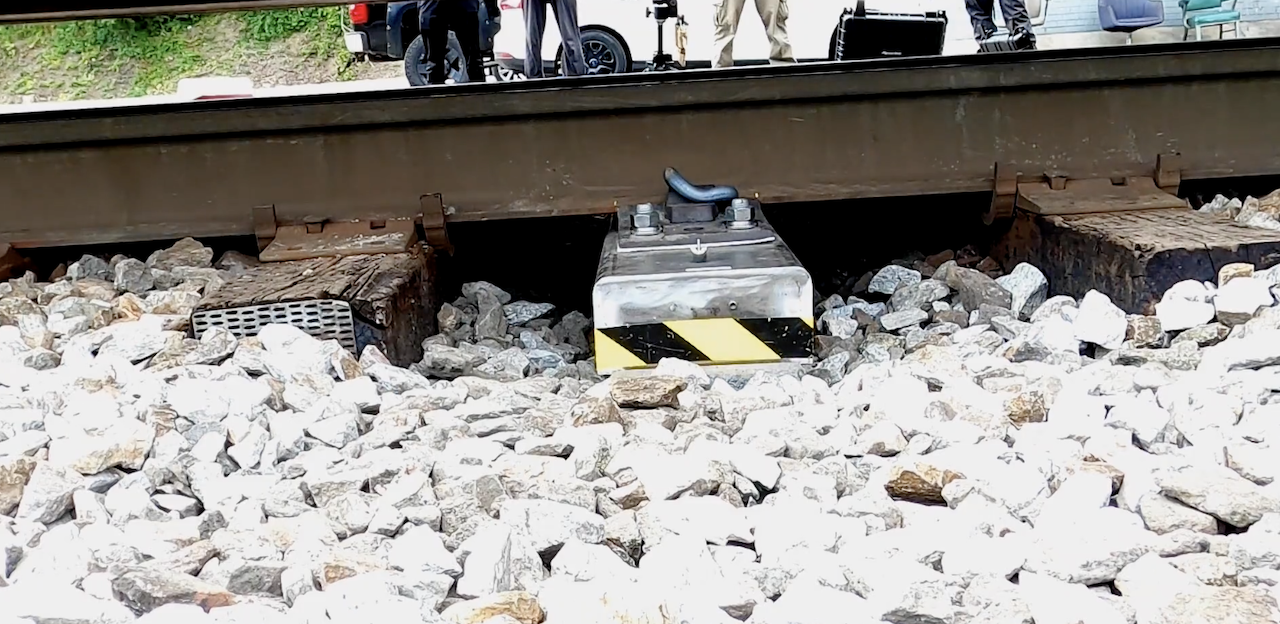urbancog
Active Member
Stadler has a project to gain US-FRA approval of a battery powered train.
Very sad.


Report: VA Tech Researchers Harness Energy From Moving Trains Into Usable Electricity - Railway Age
Researchers at the Virginia Tech Center for Vehicle Systems and Safety (CVeSS) and the Railway Technologies Laboratory have created a new kind of crosstie that replaces the conventional wooden variety and is equipped to generate power from moving trains, transforming that energy into usable...www.railwayage.com
Stadler has a project to gain US-FRA approval of a battery powered train.
As a concept it is not particularly new. So-called 'energy sidewalks were conceived about a decade ago; some using electromagnetic induction, others were piezoelectric. I'm a little surprised in this case that they went with a mechanical linkage, to turn a generator, which strikes me as maintenance-intensive and more prone to failure.Interesting concept - the question is, how much of the energy obtained is “waste” energy eg would otherwise transmit to the track as vibration, versus how much is a parasitic load that represents resistance to the train’s passage. If the latter, the locomotive will have to make up the energy by burning more oil, and we would have replaced a solar cell with fossil fuel.
- Paul

Those 'bridges' are fairly common on steep hillsides - I have seen them for both railways and roads.I took a walk along CP's Hamilton Sub today. My most curious find: I assumed it was a consistent cut/berm down the escarpment, but I discovered an interesting bridge structure along the way (couldn't get a clearer shot through the trees).

You can check out more here.
I guess I just assumed they had enough of a cut into the slope, or an earthen berm where it fell short. Even a retaining wall if it was necessary. I just found the choice of a bridge this long, where it wasn't even that steep, to be an interesting choice. There wasn't really any water flowing under it either, though the gullies suggest that wasn't always the case.Those 'bridges' are fairly common on steep hillsides - I have seen them for both railways and roads.
I guess I just assumed they had enough of a cut into the slope, or an earthen berm where it fell short. Even a retaining wall if it was necessary. I just found the choice of a bridge this long, where it wasn't even that steep, to be an interesting choice. There wasn't really any water flowing under it either, though the gullies suggest that wasn't always the case.

Charles Cooper
1933-2023
Charles visiting home turf by the Thames in London
Charles Cooper has many friends in the railfan and railway history community, and it was with great sadness we learned of his passing on February 13, 2023.
In the late 1970s Charles enjoyed exploring Ontario’s many branchline railways, then in decline, and he was determined to record their history. His search for information and period photos led seamlessly to his authorship of four books. The first of these was Rails to the Lakes, the story of the Hamilton & Northwestern Railway, published by The Boston Mills Press in 1980. This was quickly followed in 1982 by Narrow Gauge For Us, detailing the history of the historic Toronto & Nipissing Railway – the first common carrier narrow gauge railway in Canada.
An updated and much expanded history of the H&NW, entitled Hamilton’s Other Railway, was published by the Bytown Railway Society in 2001. The society had been given the manuscript for Omer Lavallee’s Canadian Pacific To The East – the International of Maine Division for posthumous publication, and Charles was asked to become its final editor and see it through to publication. While Charles fully acknowledged this was Omer’s book, both he and Omer were named as Editor and Author respectively on the citation for the Canadian Railroad Historical Association’s 2007 Annual Book Award.
Charles’ most recent interest was certainly his excellent website, entitled “Charles Coopers Railway Pages” at www.railwaypages.com. Researchers of Canadian railway history know that a tremendous wealth of information is contained on the site, and it is referred to constantly by many of us in the railfan community. Among the varied content are entire sections related to period timetables and extensive newspaper clippings, as well as historic station photos. Fortunately for us, Charles’ family is continuing to maintain the site so that its information can continue to be accessed into the future.




